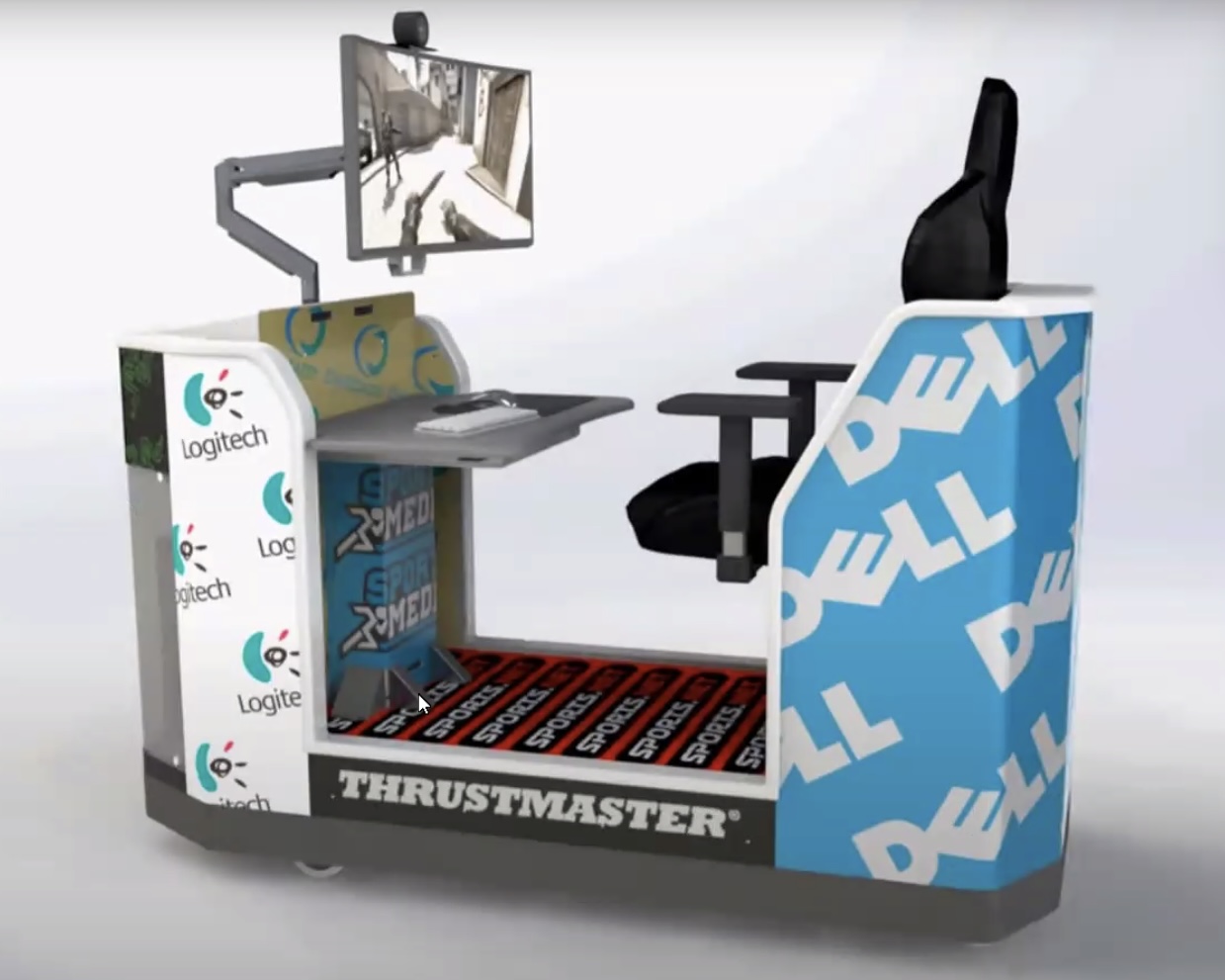The era of slapping logos on gaming jerseys and calling it "esports marketing" is officially over. Fortune 500 companies are discovering what savvy marketers have known for years: the gaming generation sees through superficial brand placements faster than a speedrunner clears a level.
Today's esports audiences: particularly the Gen Z demographic that represents 40% of all consumers: demand authentic engagement, meaningful interactions, and value-driven partnerships. They've grown up with ad blockers, skip buttons, and an innate ability to tune out anything that feels like traditional advertising.
The question isn't whether your brand should be investing in esports marketing. With the global esports market projected to exceed $1.8 billion by 2025, the question is how to do it right. Smart companies are moving beyond passive logo visibility to create integrated strategies that build genuine connections with gaming communities.
1. Strategic Influencer Partnerships That Go Beyond Sponsorship
Traditional influencer partnerships in esports often follow a tired formula: pay a streamer, get a mention, hope for the best. The most successful brands are flipping this approach entirely by creating authentic collaborations that add value to both the influencer's content and their audience's experience.
Consider how companies like Intel have partnered with content creators not just for product placement, but for co-developed educational content about PC building, performance optimization, and gaming technology. These partnerships create multiple touchpoints across months or even years, building brand affinity through consistent value delivery.
The key lies in selecting influencers whose audiences genuinely align with your target demographics and business objectives. This isn't about follower counts: it's about engagement quality, audience authenticity, and shared values. When Tyler "Ninja" Blevins partners with a brand, his audience trusts that recommendation because he's built credibility through consistent content and transparent communication about his partnerships.
Effective influencer collaborations should include co-created content series, exclusive product launches, community challenges, and interactive live streams that position your brand as a collaborator rather than just a sponsor. This approach generates exponentially higher engagement rates while building long-term brand loyalty within the gaming community.
2. Seamless In-Game Advertising Integration
The most sophisticated esports marketing happens where players spend their time: inside the games themselves. Modern in-game advertising has evolved far beyond static banner ads to include dynamic, contextually relevant brand integrations that enhance rather than disrupt the gaming experience.
Native in-game advertising includes strategically placed billboards in racing games, branded equipment in first-person shooters, and stadium signage that mirrors real-world sports partnerships. The critical factor is subtlety: advertisements should feel like natural parts of the game environment rather than intrusive interruptions.
Dynamic advertising platforms now allow brands to update in-game content in real-time, enabling seasonal campaigns, product launches, and even personalized messaging based on player behavior and preferences. This creates opportunities for brands to stay relevant and timely while maintaining the immersive gaming experience that players value.
The most successful in-game advertising campaigns focus on adding value to the player experience. When a sports brand provides authentic team uniforms in a football simulation, or when a technology company offers realistic hardware specifications in a racing game, they're contributing to the game's authenticity rather than detracting from it.
3. Video Content Marketing That Tells Your Story
Video content represents the native language of the gaming community. Esports audiences consume hours of video content daily across platforms like Twitch, YouTube, and TikTok, making video marketing essential for brands looking to connect authentically with this demographic.
Successful video marketing in esports goes beyond traditional commercials to include behind-the-scenes content, player interviews, tournament documentaries, and educational series that provide genuine value to viewers. The goal is to create content that audiences actively seek out rather than skip over.
Educational content performs particularly well in gaming communities. When technology companies create detailed breakdowns of hardware performance, optimization guides, or equipment comparisons, they position themselves as trusted resources while subtly showcasing their products' benefits.
The key to effective video marketing in esports is understanding the community's values: authenticity, skill development, entertainment, and insider access. Content that delivers on these values while maintaining high production quality will naturally generate engagement, shares, and brand affinity among gaming audiences.
4. Interactive and Playable Advertising Experiences
Traditional advertising asks audiences to passively consume marketing messages. Interactive advertising invites them to participate, creating memorable experiences that generate higher engagement rates and stronger brand recall.
Playable advertising in esports can take multiple forms: mini-games that showcase product features, interactive demos that let users experience offerings firsthand, augmented reality experiences that blend digital and physical elements, or gamified challenges that reward participation with exclusive content or prizes.
These interactive experiences work because they mirror the engaging, hands-on nature of gaming itself. Instead of interrupting the gaming experience with traditional ads, brands create complementary experiences that feel natural and enjoyable to gaming audiences.
The most effective interactive advertising provides immediate value: whether that's entertainment, education, or exclusive access: while subtly communicating brand benefits. This approach transforms advertising from an interruption into an engaging experience that audiences actually appreciate.
5. Community Building Through Tournament Organization
Smart brands are discovering that organizing esports tournaments creates deeper community connections than traditional sponsorship ever could. These events serve as powerful marketing vehicles while providing genuine value to gaming communities through competitive opportunities and prize pools.
Tournament organization doesn't require massive investments to be effective. Smaller, regional tournaments often generate higher engagement rates and stronger community loyalty than major events because they provide accessible opportunities for local players to compete and improve their skills.
The most successful tournament strategies focus on building recurring events that create ongoing touchpoints with gaming communities. Monthly tournaments, seasonal leagues, and amateur development programs position brands as long-term supporters of competitive gaming rather than opportunistic sponsors.
These events also generate extensive content opportunities through live streaming, highlight reels, player interviews, and community features that extend the marketing value far beyond the tournament itself. Each event becomes a content ecosystem that continues delivering value weeks or months after the competition ends.
6. Strategic Streaming Platform Integration
Streaming platforms like Twitch, YouTube Gaming, and Facebook Gaming represent the primary media consumption channels for esports audiences. Successful brands treat these platforms as distinct marketing environments with unique opportunities and audience expectations.
Effective streaming integration goes beyond pre-roll advertisements to include sponsored content series, branded gaming segments, exclusive partnerships with established streamers, and interactive chat sponsorships that engage viewers in real-time conversations.
The key to streaming success lies in understanding each platform's culture and audience expectations. Twitch audiences value authenticity and community interaction, while YouTube audiences prefer polished content and educational value. Brands that adapt their messaging and format to match platform expectations achieve significantly higher engagement rates.
Streaming partnerships work best when they provide value to all stakeholders: streamers receive reliable income and quality products, audiences get entertaining content and exclusive access, and brands build authentic connections with highly engaged communities.
7. Data-Driven Audience Targeting and Personalization
The most sophisticated esports marketing campaigns leverage detailed analytics and behavioral data to create personalized experiences that resonate with specific audience segments. This approach moves beyond demographic targeting to include gaming preferences, viewing behaviors, platform usage patterns, and engagement history.
Modern marketing platforms provide unprecedented insights into gaming audience behavior, enabling brands to identify the most receptive audiences and optimize their messaging for maximum impact. This data-driven approach ensures marketing investments reach genuinely interested audiences rather than broad, unfocused demographics.
Personalization in esports marketing can include customized content recommendations, targeted product offers based on gaming preferences, personalized tournament invitations, and exclusive access to content that matches individual interests and behaviors.
The most effective data-driven campaigns combine multiple touchpoints across various platforms to create cohesive, personalized journeys that guide audiences from initial awareness to active brand advocacy. This comprehensive approach maximizes return on advertising spend while building sustainable relationships with the gaming community.
The Future of Esports Marketing Excellence
The brands winning in esports marketing aren't the ones spending the most on logo placements: they're the ones creating genuine value for gaming communities through integrated, authentic partnerships. These strategies require more thought, planning, and community understanding than traditional advertising, but they deliver exponentially better results in terms of engagement, brand loyalty, and long-term customer value.
As the esports industry continues its rapid growth, the gap between authentic, integrated marketing and superficial brand placement will only widen. The companies that embrace these sophisticated strategies now will establish themselves as trusted partners within gaming communities, while those clinging to traditional advertising approaches will find themselves increasingly irrelevant to this influential and growing demographic.
The esports marketing revolution isn't coming: it's already here. The question is whether your brand will lead it or be left behind by it.





